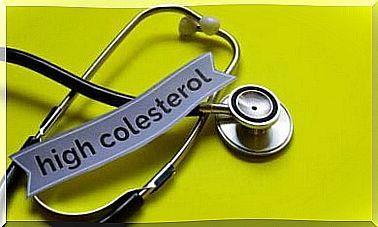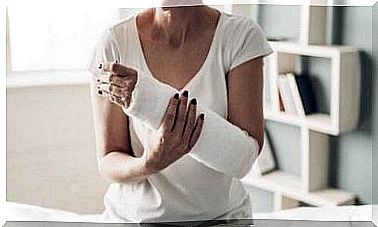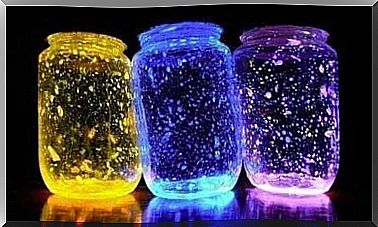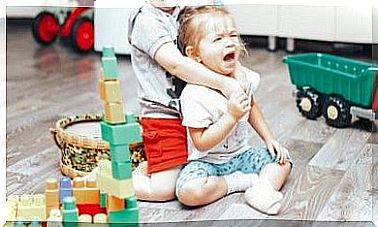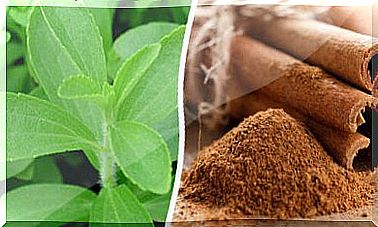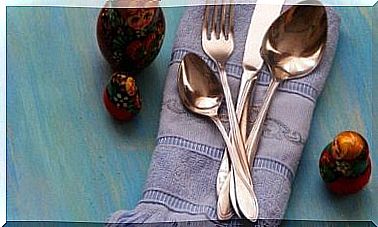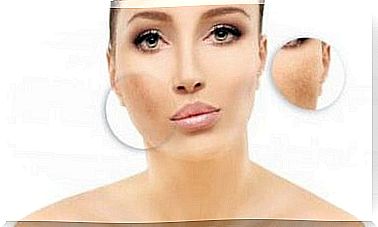Treatment Of Atopic Dermatitis In Children
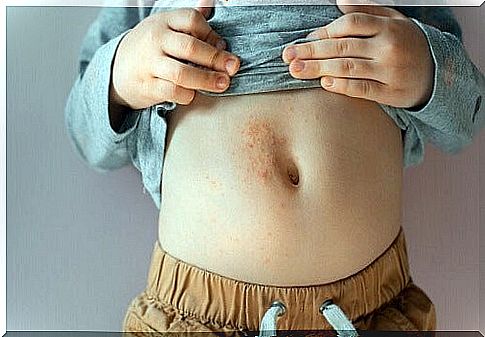
Treatment of atopic dermatitis in children is aimed at calming symptoms such as irritation and itching. The aim is also to keep the disease under control in order to avoid complications.
Atopic dermatitis is a chronic inflammatory disease characterized by rashes that can last for several months or years. An article published in the Annals of Nutrition & Metabolism reveals that about 20% of the infant population suffers from this disorder. We invite you to discover the treatment of atopic dermatitis in children.
Manifestations of atopic dermatitis
The main symptom of atopic dermatitis is itching. The manifestations vary according to the age and chronicity of the lesions. In the case of children, the following symptoms may occur:
- Xerosis.
- Erythema.
- Edema.
- Excoriations and erosions.
- Suppuration.
- Scabs.
- Skin lichenization.
Causes of atopic dermatitis
As described by a review of the scientific literature published in the journal Dermatologic Clinics , atopic dermatitis is caused by multiple interlinked factors. These factors can be genetic, immune, infectious, environmental, social and psycho-emotional and affect the skin barrier of the person.
In 1989 David Stachan formulated the hygienic hypothesis based on the observation of how allergic processes, including atopic dermatitis, occurred less frequently in children raised in very large families.
This theory suggests that the prevalence of atopic dermatitis decreases in the face of early exposure to environmental allergens and non-pathogenic infectious agents.

Recommendations for the treatment of atopic dermatitis
Due to atopic dermatitis, the skin barrier loses its function, resulting in loss of transepidermal water and reduced retention capacity. In turn, there is a lack of intraepidermal ceramides and lipids. How to best counter it?
Bathrooms and hygiene
Taking short baths of less than 5 minutes in warm water (27-30 ° C) every day is essential for treating this condition in children. It is important to use neutral pH soap substitutes, i.e. cream soaps.
It is also important to add some oats to the water, which hydrates and protects the skin with its mucilage. When the baby comes out of the water, instead of drying him by rubbing the towel on the skin, just pat him gently.
Once the bath is finished, it is recommended to use moisturizing products with emollients, whose formulation promotes skin hydration. Also remember to cut and file your baby’s nails to prevent scratching from scratching.
Hydration
It is essential to moisturize the skin with suitable creams, preferably containing lipids, ceramides or essential fatty acids. Those with oats, petroleum jelly or vitamins are also a good solution. These products significantly reduce skin dryness.
Nutrition and diet
Although food allergies are on average more common in children with atopic dermatitis, opting for an exclusion diet is not recommended. In preschool age, the foods most often associated with acute atopic dermatitis are milk, eggs, wheat and soy.
The role of probiotics
The role of intestinal flora, as well as the preventive effect of probiotics in the development of the disease, has not yet been clarified. Some meta-analyzes have suggested positive effects of probiotics in the prevention of atopic dermatitis, especially in infants administered during the perinatal period.
Recognize and eliminate aggravating or triggering factors
As far as possible, children should be dressed in clothes of cotton and natural fabrics. These materials allow for greater absorption of sweat and soothe itching. It is also advisable to use loose clothing that is not too much in contact with the skin.
On the other hand, it is important to wash your clothes before wearing them for the first time. In the washing machine, avoid using detergents, bleaches or fabric softeners, which can leave irritating particles on the fabric.
At the same time, try to avoid direct contact with metal buttons, labels, rubber bands, plastics, perfumes or any other substance or element that could cause a rash.
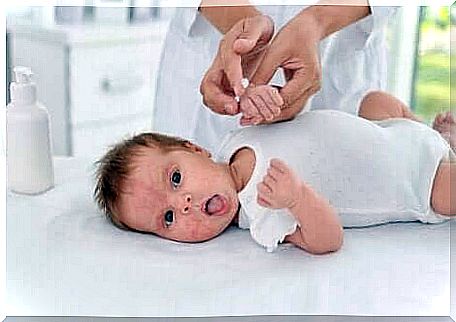
Treatment of atopic dermatitis with medicines
During the remission phase, the prevalent symptom will be itching. The intense burning causes the baby to scratch and damage the skin which is prone to infection. Here is a list of topical and systemic treatments:
- Topical corticosteroids: they are used in the acute phase, 1 or 2 times a day, for a period not exceeding 15 days.
- Topical immunomodulators: these are calcineurin inhibitors, the main anti-inflammatory alternative after topical corticosteroids.
- Systemic immunosuppressants: potential side effects limit their use.
- Immunoglobline for intravenous use: in the most severe manifestations of the disease, they are a safe and effective remedy.
- Phototherapy: broadband UVB phototherapy is the most popular treatment for pediatricians, at least in the initial phase.
- Biological agents : their use is reserved for the most serious cases.
Treatment of atopic dermatitis in children: what to keep in mind?
Treatment of atopic dermatitis in children requires an individual approach. Essential is the control of predisposing factors, as well as the due care of the skin through the use of emollients and correct hygiene habits.
Systemic or topical treatments depend on the extent and severity of the disease. It is therefore essential to consult a professional dermatologist.
